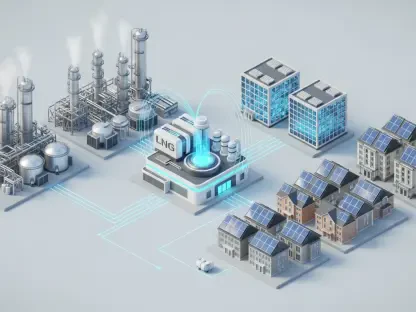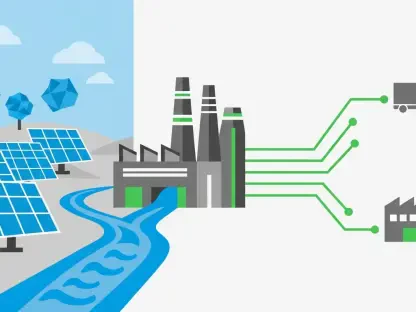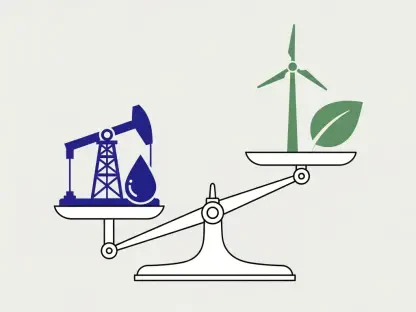Romania is making a renewed effort to develop the Tarnița-Lăpuștești reversible hydropower plant project, driven by a newly signed Memorandum of Understanding (MoU) between the Romanian Ministry of Energy and the Japanese company Itochu Corporation. The hydropower plant, with a planned capacity of 1GWh, was originally conceived in 1979 and is located on the Someș River, approximately 30 kilometers from Cluj-Napoca. This initiative aims to resurrect a project that has been repeatedly placed on the public agenda over the past decades but has struggled to gain the necessary momentum due to various obstacles. The new partnership marks a significant step in addressing Romania’s broader energy challenges and underscores the strategic importance of the project in stabilizing the country’s energy supply.
Strategic Importance of the Tarnița-Lăpuștești Project
The primary aim of reviving the Tarnița-Lăpuștești project is to provide a significant balancing capacity to Romania’s national energy system. This is particularly crucial in the current context characterized by the expansion of renewable energy sources, which, due to their intermittent nature, generate volatility in short-term energy market prices. The ability to pump water back into the dam during periods of excess supply in the power grid is a key feature of the reversible hydropower plant that would help mitigate this instability. This capability renders the project indispensable for ensuring a reliable energy supply as Romania increases its renewable energy share in line with European Union targets.
Historically, the project has attracted interest from numerous foreign companies expressing intentions to invest. However, each attempt to proceed with the development has stalled during negotiations. The Ministry of Energy’s announcement of the MoU with Itochu underscores a strategic push towards balancing Romania’s energy system by stabilizing fluctuating renewable energy inputs. By drawing on Itochu’s expertise and resources, Romania hopes to overcome the hurdles that have hindered progress for decades and finally bring the Tarnița-Lăpuștești project to fruition. This collaboration is seen as an essential move to leverage international knowledge and finance in addressing the complexities of renewable energy integration.
Challenges and Setbacks
The article highlights the ongoing difficulties faced by the project, noting that the new MoU was announced just days before an anticipated failure of a public tender by SAPE, a state-owned holding company. The tender aimed to secure a new feasibility study for the project. Despite having significant interest, the tender was reportedly structured in a way that essentially precluded finding a suitable consultant, with two bids failing to meet SAPE’s announced requirements out of the 15 prospective consultants who filed over 70 requests for clarifications. This procedural bottleneck revealed underlying issues within project management and raised questions about the structural readiness to push the project forward, hinting at deeply rooted challenges that need to be addressed.
A historical backdrop reveals that a previous project company, Hidro Tarnița, was dissolved in July of the prior year. SAPE, commenting on the dissolution, cited the company’s inability to achieve anything during its 10-year existence, including securing financing or attracting an investor for the hydropower plant’s construction. This history of failed attempts and repeated obstacles underscores the complexity of realizing the Tarnița-Lăpuștești project. Despite these setbacks, the renewed efforts signal a commitment to finding a viable path forward, although overcoming past failures requires strategic planning, transparent processes, and cohesive stakeholder cooperation.
Renewed Hopes with Itochu Partnership
The frequency with which the Tarnița-Lăpuștești project surfaces in public discourse reflects its strategic importance to Romania’s energy sector. The endeavor aims to provide a viable solution for energy imbalance caused by the unpredictable nature of renewable energy sources. By partnering with Itochu, Romania hopes to leverage the Japanese company’s expertise and resources to realize the long-delayed project. This partnership is expected to bring a fresh perspective and renewed vigor to the project, addressing technical, financial, and administrative challenges that have historically stymied progress. The collaboration highlights a broader trend toward international cooperation in tackling energy challenges.
The announcement has brought a sense of cautious optimism, although past experiences remind stakeholders of the hurdles that remain. The overarching trend is the increasing emphasis on balancing renewable energy sources within national grids, a challenge faced by many countries expanding their green energy portfolios. This trend underlies the broader efforts to invest in grid stabilization projects like Tarnița-Lăpuștești. The partnership with Itochu could be a turning point, offering a beacon of hope amidst a legacy of setbacks, signaling a more pragmatic approach to aligning renewable energy goals with infrastructural capabilities.
Strategic Pathway Towards a Balanced Energy Grid
The article highlights the persistent challenges faced by the project, noting that the new Memorandum of Understanding (MoU) was announced just days before an expected failure of a public tender by SAPE, a state-owned holding company. This tender aimed to secure a new feasibility study for the project. Despite significant interest, it was reportedly structured in a way that essentially made it impossible to find a suitable consultant, with two bids failing to meet SAPE’s requirements out of 15 prospective consultants who filed over 70 requests for clarifications. This procedural bottleneck revealed issues within project management, raising questions about the structural readiness to advance the project, hinting at deeply rooted problems needing to be addressed.
Historically, a previous project company, Hidro Tarnița, was dissolved in July of the prior year due to its inability to achieve anything during its 10-year existence, including securing financing or attracting an investor for the hydropower plant’s construction. SAPE cited the timeline’s complexities and multiple obstacles. Despite these setbacks, renewed efforts signal a commitment to finding a viable path forward. However, overcoming past failures will require strategic planning, transparent processes, and cohesive stakeholder cooperation.









